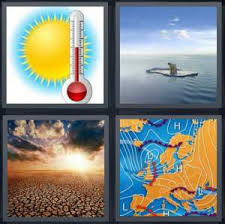The data from scientists just gets scarier and scarier. Despite the fact that you may look out your window and not see much change in your immediate landscape, massive changes are happening around the globe that are already having a significant impact on our planet and many other people around the globe are already feeling the pain. The recent articles I’ve sent you about the massive heat waves in Australia going on now make this pretty obvious. And now, this.
I have been totally consistent in saying that climate change is happening substantially faster than scientists have been willing to project for fear of being alarmists. But now the data is so compelling that they are finally verifying what I’ve been saying all along.
“The authors found that [Greenland] ice loss in 2012, more than 400 billion tons per year, was nearly four times the rate in 2003…suggesting that scientific estimates of the effects of a warming planet have been, if anything, too conservative.“
At the other end of the earth, Antartica, the data was not so dire. Now it appears that this was a false sense of security because
“At the other end of the earth, the speed of Antarctica’s ice loss is also becoming clearer. A study published last week, also in the Proceedings of the National Academy of Sciences, surveyed four decades of data and found faster losses in some regions than scientists had previously estimated.
The continent has presented a mixed story in recent years, with researchers measuring substantial losses in some regions but stability and even gains in others. But the new paper found considerable losses of glacial ice in East Antarctica, previously considered to be relatively stable. As a whole, Antarctica lost about 40 billion tons of ice per year in the 1980s, but it has been losing roughly 250 billion tons per year in the past decade.”
It is imperative that we citizens of the world do everything we can to quit burning fossil fuels. While our personal behavior can have some impact, the most important thing we can do is first to support and vote for candidates that will provide incentives and create laws and policies that will supercharge the transition from fossil fuels to renewables. Second, we can try to convince any person that is now in a position to do these things but is resisting, that further delay will lead to tragic outcomes. 50 or 75 years from now I don’t want my new grandson to have to deal with the worst outcomes we can bequeath to him and have him wonder what the f….. we were thinking in the early part of the century. We’ve already baked in much worse consequences than we are experiencing today. Let’s work hard together to create a better outcome than might otherwise occur.
January 11, 2019
The New York Times
Greenland’s Melting Ice Nears a ‘Tipping Point,’ Scientists Say
https://nyti.ms/2HsZTvO
Greenland’s ice is melting so fast that it could become a major factor in sea-level rise around the world within two decades, scientists said in a new study.CreditCreditLucas Jackson/Reuters
January 21, 2019
Greenland’s enormous ice sheet is melting at such an accelerated rate that it may have reached a “tipping point” and could become a major factor in sea-level rise around the world within two decades, scientists said in a study published on Monday.
The Arctic is warming at twice the average rate of the rest of the planet, and the new research adds to the evidence that the ice loss in Greenland, which lies mainly above the Arctic Circle, is speeding up as the warming increases. The authors found that ice loss in 2012, more than 400 billion tons per year, was nearly four times the rate in 2003. After a lull in 2013-14, losses have resumed.
The study is the latest in a series of papers published this month suggesting that scientific estimates of the effects of a warming planet have been, if anything, too conservative. Just a week ago, a separate study of ice loss in Antarctica found that the continent is contributing more to rising sea levels than previously thought.
Another new analysis suggested that the oceans are warming far faster than earlier estimates. Warming oceans are currently the leading cause of sea-level rise, since water expands as it warms.
Researchers said these findings underscored the need for action to curb emissions of planet-warming gases and avoid the worst effects of climate change.
[A record number of Americans are concerned about global warming, a new poll found.]
Rising sea levels are one of the clearest consequences of global warming; they are caused both by thermal expansion of the oceans and by the melting of ice sheets on land. Current projections say that if the planet warms by two degrees Celsius (3.6 degrees Fahrenheit) over preindustrial times, average sea levels will rise by more than two feet, and 32 million to 80 million people will be exposed to coastal flooding.
Much of the previous research on Greenland’s ice has dealt with the southeast and northeast parts of the island, where large chunks of glacial ice calve into the sea. The new paper focuses on the ice-covered stretches of southwest Greenland, which has few large glaciers and was not generally considered as important a source of ice loss.
But as the earth warms, the paper concludes, the vast plains of southwestern ice will increasingly melt, with the meltwater flowing to the ocean. Within two decades, it says, the region “will become a major contributor to sea level rise.”

Greenland Is Melting Away
The study, which appears in the Proceedings of the National Academy of Sciences, used satellite data and ground-based instruments to measure Greenland’s ice loss in the 21st century. It looked closely at what seemed to be a pause in the ice loss for about a year, beginning in 2013, that followed a stretch of greatly accelerated melting.
The researchers tied the pause in melting to a reversal of the cyclical weather phenomenon known as the North Atlantic Oscillation. Before the pause, the oscillation was in what is known as its negative phase, which is associated with warmer air hitting west Greenland, along with less snowfall and more sunlight, all of which contribute to ice loss. When the cycle shifted into a positive phase in 2013, an “abrupt slowdown” of melting occurred.
Yet, the slowdown was anything but good news, said Michael Bevis, the lead author of the paper and a professor in the School of Earth Sciences at Ohio State University.
The North Atlantic Oscillation has occurred throughout the historical record, he noted. But before 2000, overall average temperatures were cool enough that the N.A.O.’s positive and negative cycles did not have much of an effect on rates of melting in Greenland.

Credit: Lucas Jackson/Reuters
Now, the strong effect that the cooler cycle had on the rate of melting — even if it was helpful in stopping ice loss — is a reason for concern, Dr. Bevis said. If the warm cycles of the N.A.O. are associated with huge losses of ice, and the cool cycles only pause the melting, it suggests a threshold has been reached: As average temperatures rise further, melting will be more sustained, and the cooling cycles will have less of an effect in slowing the ice loss.
“If a relatively minor cycle can cause massive melting,” he said, “it means you’ve reached a point of amazing sensitivity” to warmer temperatures, which could represent “the tipping point.”
And so, he said, “One degree of warming in the future will have way more impact than one degree of warming in the last century.”
The new research dovetails with other recent papers on the accelerating melting. Last month a team of researchers published a paper in Nature that used satellite observations, analysis of ice cores and models to show that losses from the Greenland ice sheet have reached their fastest rate in at least 350 years.
At the other end of the earth, the speed of Antarctica’s ice loss is also becoming clearer. A study published last week, also in the Proceedings of the National Academy of Sciences, surveyed four decades of data and found faster losses in some regions than scientists had previously estimated.
The continent has presented a mixed story in recent years, with researchers measuring substantial losses in some regions but stability and even gains in others. But the new paper found considerable losses of glacial ice in East Antarctica, previously considered to be relatively stable. As a whole, Antarctica lost about 40 billion tons of ice per year in the 1980s, but it has been losing roughly 250 billion tons per year in the past decade.
That new paper adds to a body of recent research showing that Antarctica’s ice loss is accelerating, including a study in June that found that the rate of ice loss had tripled since 2007. Scientists estimate the Antarctic melting will contribute six inches to sea-level rise by 2100.
Luke D. Trusel, a glaciologist at Rowan University and an author of last month’s Nature paper on Greenland, said the new research by Dr. Bevis and his colleagues “provides clear and further illustration of how sensitive Greenland now is” to global warming.
“What’s happening today is well beyond the range of what could be expected naturally,” he said. “The human fingerprint on Greenland melting today is unequivocal.”
Still, he said, most estimates of a tipping point for Greenland ice loss cite higher average temperatures than are currently occurring, more along the lines of 1.5 or two degrees Celsius above preindustrial levels. Global average temperatures have already increased by about one degree Celsius (1.8 degrees Fahrenheit).
A co-author of the Nature paper, Sarah B. Das, a scientist at the Woods Hole Oceanographic Institution, agreed that Dr. Bevis’s study reinforced her own team’s conclusions and showed “how quickly Greenland is disappearing.” The common finding, she said, is that climate change has brought Greenland to a state in which “a little bit of a nudge is going to have an outsized impact,” causing enormous melting.
But, she said, “I take issue with using ‘tipping point’ to describe the accelerating mass loss Greenland is experiencing,” because “it makes it appear as if we have passed, or soon will pass, the point of no return.” She said she saw reasons for hope.
Dr. Trusel agreed that talk of tipping points could discount humans’ ability to mitigate global warming. “We may be able to control how rapidly the ice sheet changes in the future,” he said.
“By limiting greenhouse gas emissions we limit warming, and thus also limit how rapidly and intensely Greenland affects our livelihoods through sea-level rise,” he added. “That, it seems, is our call to make.”
For more news on climate and the environment, follow @NYTClimate on Twitter.





